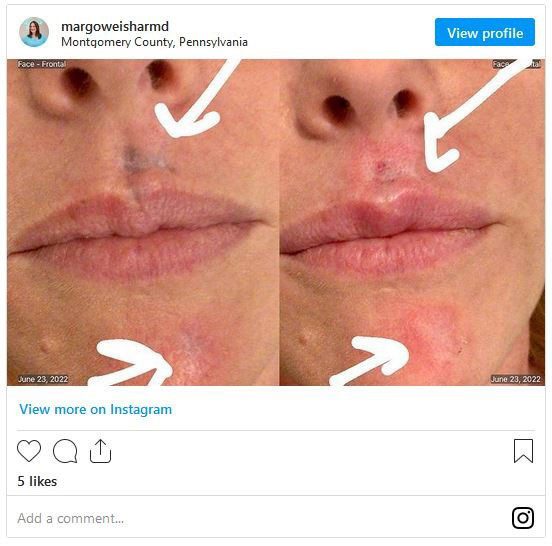Countdown to 2026 with Springhouse Derm LEARN MORE
- About
- Cosmetic
- Conditions
- Injectables
- Lasers
- Skin Rejuvenation
- Signature Treatments
- Medical
- Gallery
- SHOP
- Contact us
- Book Now
Dr. Margo Weishar | Aesthetic Treatments | November 9th, 2022
Springhouse Dermatology is an integrated skin health and wellness center led by double Board-Certified Dermatologist Margo Weishar, MD. We offer patients a comprehensive approach to skin including the most current technology in laser medicine, advanced use of injectables by expert physicians, and a team of experienced practitioners to provide your care. As dermatologists, we are uniquely able to care for all medical skin concerns as well as cosmetic needs, integrating the latest techniques and technology in skin wellness. Haute Beauty sat down with Dr. Margo Weishar to discuss what to do if you have skin pigmentation.
Remember that kid who sat behind you and always teased you in third grade? The one who ended up stabbing you in the leg with a pencil? I bet you always do when you look at the small grey spot that the pencil tattooed on your leg. Do you recall when you fell off your bike and had a “road rash” or abrasion from scraping along the ground, leaving gravel and dirt in your skin? Again, I bet you always do when looking at your skin’s discoloration.
Anything inserted or embedded in your skin can leave what dermatologists call a “traumatic tattoo.” This happens if the particles that make up the color are too large for the body’s natural defense cells to remove. As a result, they do not cause inflammation or infection but may stay under the skin forever (see the image below).

If you have a traumatic tattoo, just like that one, don’t just settle with it. Haute Beauty expert Dr. Margo Weishar, a board-certified dermatologist and founder of Springhouse Dermatology in Philadelphia, offers a safe and effective treatment method. And irrespective of how old the traumatic tattoo might be, don’t let that deter you from treatment! It’s common that it can be removed with just one treatment.
One of the most promising methods of removing traumatic tattoos is the PICO Genesis which uses picosecond laser light to shatter the foreign substance into tiny pieces where the body can remove them. There is no damage to the skin’s surface, so there is no risk of scarring.
The laser may be able to remove some traumatic tattoos entirely. However, because we often don’t know the exact substance causing the tattoo, it is hard to predict whether one treatment or more would be necessary. After seeing the reaction to the first treatment, one can better estimate how many treatments may be required.
To find out more about traumatic tattoos and how Dr. Weishar can help you, contact Springhouse Dermatology today.